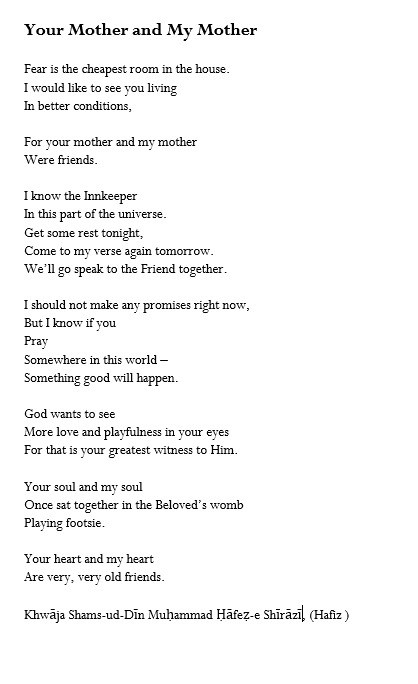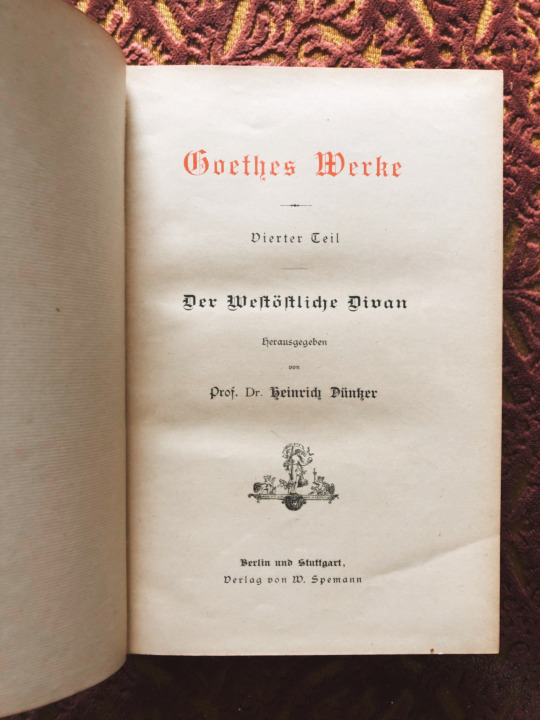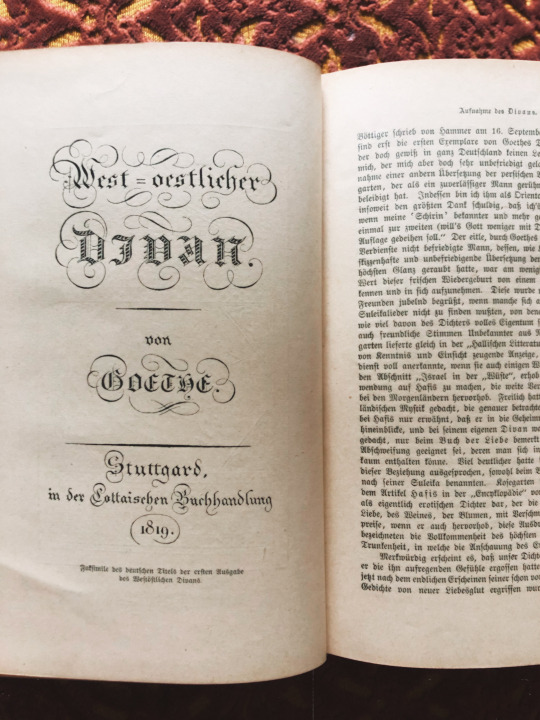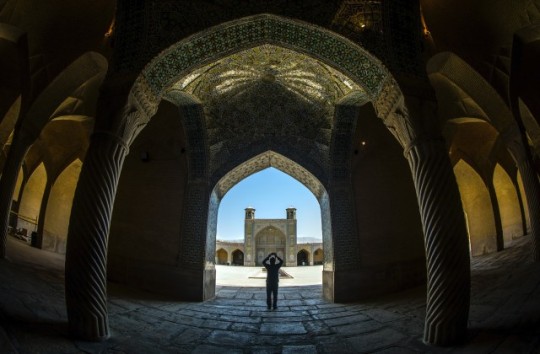#hafez shiraz
Explore tagged Tumblr posts
Text
▫️
İçkiçilərdən səccadə çiyninə çəkən şəhərin İmamını; dün gecə çiyinlər üstündə aparırdılar.
- Şirazlı Hafiz
▫️

3 notes
·
View notes
Text
I never really cared for the things of this world. It was the glow of Your Presence that filled it with beauty.
— HAFEZ ⚜️ Love’s Alchemy: Poems from the Sufi Tradition, transl. by David Fideler & Sabrineh Fideler, (2010)
#Persian#حافظ الشيرازي#Hafez#Hafiz#Hafez of Shiraz#Love’s Alchemy: Poems from the Sufi Tradition#David Fideler#Sabrineh Fideler#(2010)#♥
71 notes
·
View notes
Text

“You set the world in chaos with your ardent, radiant glee.'' – Hafiz
Radiant Glee 10/07/2024 © All Rights Reserved by Jamil Hussain
#lovely#photography#poetic#beautiful#beauty#photos#photooftheday#pictures#roses#flowers#hafez#hafiz of shiraz#radiant#world#chaos#inner world#magical world#inspring quotes#insipirational#inspiring words#gorgeous#divine#heavenly#heaven's secret#amazing beauty#inspiring beauty#inner beauty#pure beauty#rosestagram#rosesofinstagram
8 notes
·
View notes
Text

#poetry#hafiz#hafez#hafiz of shiraz#your mother and my mother#writing#literature#classic poetry#persian poetry#lyric poetry#this is my mums absolute favorite poem out of all poems#hand made sweater
31 notes
·
View notes
Text
"Love seemed easy at first, but then came the hardships."
In simpler terms, it suggests that falling in love might initially appear effortless and delightful, but as time goes by, the challenges and difficulties of love become apparent. This line beautifully captures the contrast between the initial excitement of love and the complex reality that follows.
Hafez, full name Khwaja Shams-ud-Din Muhammad Hafez-e Shirazi, was a 14th-century Persian poet whose works are regarded as some of the finest in Persian literature. He was born in Shiraz, Iran, around 1315 and passed away in 1390.
Hafez is best known for his collection of lyrical poems, known as ghazals, which explore themes of love, wine, spirituality, and the hypocrisy of religious orthodoxy. His poetry is often mystical and filled with symbolic imagery. Despite the challenges he faced during his life, including political instability and personal hardships, Hafez's work has continued to inspire and resonate with readers over centuries.
His tomb, located in Shiraz, is a well-visited pilgrimage site and a symbol of Persian culture and literature. The line "��ه عشق آسان نمود اول ولی افتاد مشکلها" is one of many examples of his deep understanding of love and life, capturing the essence of the human experience in a few short words.


#art#love poem#poem#poetry#design#gift#shop#love#birthday gift#family#decor#store#by me#hafez#hafiz of shiraz#handart#hand writing#text#artist alley#artists on tumblr
1 note
·
View note
Text
To love the insides of someone's mind is the finest adventure rides we humans could ever embark upon - have plenty of it - and sleep with as many minds as you can. Be a slut, be a whore. Fuck those literary geniuses whose bodies are now buried underneath the earth. Flirt with the likes of Socrates, Aristotle, Plato. Roam around with seers like Rumi, Hafez, Sa'di of Shiraz. Sink deep into poets like Gibran, Qabbani, Darwish. Get naked with the unapologetic daring lionesses like Anaïs, Virginia, Sylvia. Go to the eastern edge and drink from the cups of Buddhism, Tao, Zen. There are a thousand streams of life that these giants have gifted to the world. Partake your share of it, as much as you can...
Random Xpressions
18 notes
·
View notes
Text

Shiraz, Iran, holds a rich history with settlements dating back to 5500 BC. It flourished under Islamic rule, becoming a cultural hub in the 13th century, known as "The Athens of Iran" for its scholarly and artistic contributions. Renowned poets Hafez and Saadi were born here, adding to its literary legacy. Under later dynasties, Shiraz continued to thrive as a center of art, knowledge, and trade.
5 notes
·
View notes
Text



The "West-Eastern Diwan" by Goethe - A bridged beauty between Occident and Orient. Published by Prof. Dr. Heinrich Düntzer, Berlin and Stuttgart, 1878.
It is said, that Goethe used the "oriental mask" to cover his pantheistic ideas, speaking trough the lips of the newly translated poets. Next to the Hafez' poems, which where published and translated by the orientalist Joseph von Hammer, other literal and scientific sources were used as inspirational impact and to refine the tone of the great masters of Oriental poetry, like the academic achievements of Prof. Wurm, Prof. Paulus (Orientalist in Heidelberg), other translations of cultural impact like Rückert's "Östliche Rosen" (~ Eeastern Roses) the Mewlana-Transaltions of 1819 and the collection of August von Platen called "Ghaselen", Goethe corresponded with Boisserés and with one of the Grimm brothers. Wilhelm von Humboldt praised the authencitiy of Goethe's work.


The "East-Western Diwan" is the last great cycle of poetry Goethe has wrote, his interest for Persian poetry arised in the time of the Rheinbund. It can be traced, that this period of time disillusioned him, the diving into another time and continent is essential for escapism, but as Goethe and his field of interest and curiosity is as deep as wide, he must felt like thrown like a freed bird into new heavenly realms. The "Diwan Atmosphere" was created by reading several works and taking in Oriental elements. So we can find "Madschnun and Leila" interwoven in the heart-shaking correspondence between Suleika and Hatem in the "Book Suleika". Expressions of the Dervish Hafis of Shiraz can be found, Tarafas, Labid (Prophet Mohammad called him the poet, who said the most true words; Labid converted to Islam and wrote eologies, but it is said, that he stopped practicing ?), Zoheir, Saadi and Hafez. Saadi was also known as a sheik and was called "Poet-King" (or King-Poet, if you like :P) and if we would compare the structure of the poems, it is more likely, that Goethe imitated Saadi, rather than Hafez.

Goethe is playing wonderfully with expressions, merging wine and tears, praising the dust of the lover as better than safran and comparing the loved one to a drop of water and the lyrical-I as desert sand. Numerology is emphasising the cultural background, drawing a link between the poet and the priest, pairing mystics and religion into ecstatic relief. This wonderful work is a gift, for everyone, who sometimes had the feeling of getting ripped apart by two forces. It feels like the made-up gap between Europa and Asia is nothing but a fiction, like a forgotten song of our cultural cradle. Let us share the pomegranates of our culture, let us nourish from unkown fruits to break our borders, to sharpen our discernment, to truely lift our feet and recognize the extraordinary.

#antiquarian book#world literature#19th century literature#book#reading#Goethe#East-Western Diwan#Östwestlicher Divan#cultural bridge#Persian poetry#Arabian culture#Oriental#Orient#poetry#poets#German poet#Johann Wolfgang von Goethe#1878#old book#antiquarian
10 notes
·
View notes
Text

🌹
Gileyliyəm onun qara saçlarından:
- Sorma!
Şirazlı Hafiz
—-
#xuxanov#azerbaijan#tabriz#یاشار احد صارمی#azərbaycan#yashar ahad saremi#تبریز#poetry#خوخانف#şirazlı hafiz#şiraz#hafez shiraz
0 notes
Text
A day of Silence Can be a pilgrimage in itself. A day of Silence Can help you listen To the Soul.
— Hafez, I Heard God Laughing: Poems of Hope and Joy, renderings by Daniel Ladinsky, transl by H. Wilberforce Clarke et. al, (2006)
#Persian#Hafez#Hafiz#Hafez of Shiraz#I Heard God Laughing#Poems of Hope and Joy#Daniel Ladinsky#H. Wilberforce Clarke#(2006)
86 notes
·
View notes
Photo

Hafez de Shiraz
Hafez de Shiraz (también llamado Hafiz, 1315-1390) se considera el más grande de los poetas persas y se encuentra entre los escritores más famosos y admirados de la literatura mundial. En la actualidad es uno de los poetas más traducidos y su obra continúa resonando con las audiencias modernas.
Sigue leyendo...
2 notes
·
View notes
Text
Persian Odyssey: A Tour of Iran's Mystical Wonders
Iran, which is tucked away in the Middle East, draws visitors with a timeless charm and offers an enriching fusion of history, culture, and natural beauty. The captivating nation is full of adventures just waiting to be discovered, but it is frequently clouded by misunderstandings. You are invited to travel to Iran in this article, a country rich in artistic expression, history, and kind hospitality.

Unveiling Iran's Rich Heritage
Persepolis: Begin your odyssey with a visit to Persepolis, the ancient capital of the Achaemenid Empire. Stroll through this archaeological marvel, where towering columns and intricately carved reliefs transport you to the time of Cyrus the Great and Darius the Great.
Isfahan: Isfahan, also referred to as "Half of the World," mesmerizes with its magnificence. Discover the Imam Mosque, Sheikh Lotfollah Mosque, and Ali Qapu Palace on Imam Square, a UNESCO World Heritage Site, which is home to these three magnificent structures.
Shiraz: Shiraz, a city known for its poets and beautiful gardens, captivates with its grandeur. Visit the lush Eram Garden, pay your respects at the famous Hafez's grave, and allow the Nasir al-Mulk Mosque to enchant you with its rainbow of colors.
Yazd: Experience Yazd, a desert oasis with meandering roads, vintage wind catchers, and mud-brick buildings that evoke a bygone era. While exploring the Jameh Mosque, take in the vast scenery from the Towers of Silence.
Tehran: Iran's dynamic capital city of Tehran provides a sense of the country's modernity. Discover Iran's National Museum, the lavish Golestan Palace, and the crowded Tajrish Bazaar, where locals and tourists mingle.
Iranian Cuisine: A Gastronomic Journey
Iranian food is a discovery of tastes and customs. Enjoy luscious kebabs, mouthwatering rice dishes with saffron in them, and robust stews like Ghormeh Sabzi and Fesenjan. Don't forget to delve into the world of Persian confections, where baklava and gaz are undisputed kings.
Warmth of Iranian Hospitality
Travelers are welcomed with open arms by Iranians, who are renowned for their kindness. Experience the true warmth of the locals while traveling, staying in traditional guesthouses, and having cross-cultural talks.
Persian Arts and Crafts
Iranian arts and crafts have a long history. Explore the world of tiny painting and calligraphy, take in the stunning tile work in medieval mosques, and take in the beautiful patterns of Persian carpets. You can try your hand at these ancient crafts in a number of classes.
Nature's Beauty
Your tour will have a striking backdrop provided by Iran's varied landscapes. The country's natural beauty is a feast for the senses, from the lush green woods of Gilan to the dry deserts of Yazd and the peaceful shores of the Caspian Sea.
Traveling Responsibly
It's important to observe local laws and customs when traveling to Iran. Respect is demonstrated by dressing modestly and abiding by cultural customs. A successful and pleasurable trip also depends on staying up to date with travel warnings and getting the required visas.
Conclusion: Iran, with its many facets of appeal, offers an amazing journey through the realms of art, history, and hospitality. Iran is not just a destination; it is an unforgettable experience that leaves an imprint on your heart and spirit as you meander through the busy bazaars, indulge in regional cuisine, and be in awe of historic structures. Take advantage of Persia's enchantment and set out on an adventure that will make your trip memories last a lifetime with Iran Tour Packages From Hyderabad.
#iranian#ancient iran#tours and travels#vacation#love on tour#travel guide#travel#travel blog#holiday#places to visit#iran
2 notes
·
View notes
Text
Miniature Shiraz in Capsule
Create a photorealistic scene of a miniature city of Mashhad encapsulated inside a transparent pill capsule, placed gently on a sandy beach during golden hour. The capsule should have the name “SHIRAZ” printed on it in bold, clean English font, with the Persian name “شیراز” beneath it in elegant typography. Inside the capsule, include intricately detailed, miniature versions of Shiraz’s most iconic landmarks—such as Perspolis, Tomb of Hafez, Eram Garden,Shah Cheragh, Qur'an Gate and Pasargad. Add surrounding trees and walkways to enhance realism. Use soft, cold and cinematic lighting inside the capsule to highlight the beauty and sacredness of the cityscape. The forest background should feature the trees and glowing reflections of sun on the leaves of trees, with the sunlight casting warm, golden hues. The capsule’s reflection should be clearly visible on the lawn in front of tree, adding to the surreal, dreamlike, and imaginative atmosphere.
0 notes
Text
Miniature Shiraz in Capsule
Create a photorealistic scene of a miniature city of Mashhad encapsulated inside a transparent pill capsule, placed gently on a sandy beach during golden hour. The capsule should have the name “SHIRAZ” printed on it in bold, clean English font, with the Persian name “شیراز” beneath it in elegant typography. Inside the capsule, include intricately detailed, miniature versions of Shiraz’s most iconic landmarks—such as Perspolis, Tomb of Hafez, Eram Garden,Shah Cheragh, Qur'an Gate and Pasargad. Add surrounding trees and walkways to enhance realism. Use soft, cold and cinematic lighting inside the capsule to highlight the beauty and sacredness of the cityscape. The forest background should feature the trees and glowing reflections of sun on the leaves of trees, with the sunlight casting warm, golden hues. The capsule’s reflection should be clearly visible on the lawn in front of tree, adding to the surreal, dreamlike, and imaginative atmosphere.
0 notes
Text
Miniature Shiraz in Capsule
Create a photorealistic scene of a miniature city of Mashhad encapsulated inside a transparent pill capsule, placed gently on a sandy beach during golden hour. The capsule should have the name “SHIRAZ” printed on it in bold, clean English font, with the Persian name “شیراز” beneath it in elegant typography. Inside the capsule, include intricately detailed, miniature versions of Shiraz’s most iconic landmarks—such as Perspolis, Tomb of Hafez, Eram Garden,Shah Cheragh, Qur'an Gate and Pasargad. Add surrounding trees and walkways to enhance realism. Use soft, cold and cinematic lighting inside the capsule to highlight the beauty and sacredness of the cityscape. The forest background should feature the trees and glowing reflections of sun on the leaves of trees, with the sunlight casting warm, golden hues. The capsule’s reflection should be clearly visible on the lawn in front of tree, adding to the surreal, dreamlike, and imaginative atmosphere.
0 notes

